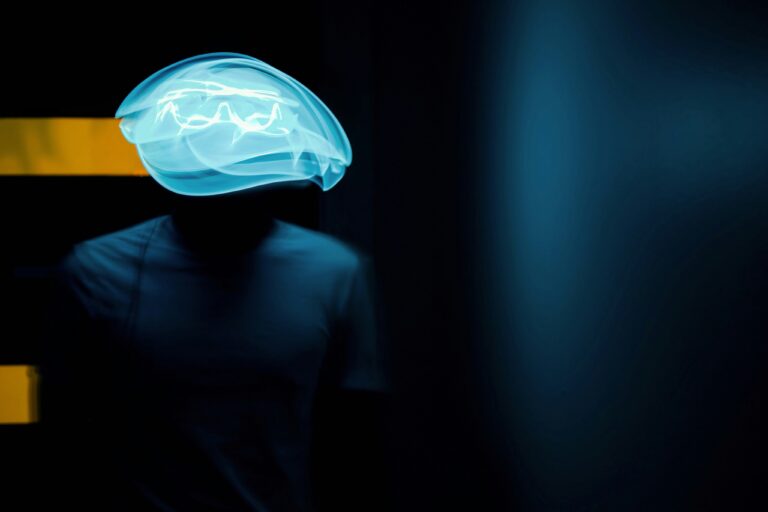When it comes to managing depression, finding the right treatment can often feel like navigating a complex maze. Depression treatment options are diverse, with various therapies and medications available to address this challenging condition. Among the most discussed treatments are TMS therapy vs. antidepressants, each offering unique benefits and considerations.
Exploring these two approaches—TMS (Transcranial Magnetic Stimulation) Therapy and traditional antidepressants—can provide clarity and guide you toward a decision that aligns with your personal needs and preferences. Understanding their effectiveness, potential side effects, and overall impact is essential for making an informed choice.
Let’s discuss how TMS therapy and antidepressants differ, helping you find the path that leads to the most effective management of your depression.
Understanding TMS Therapy
What is TMS Therapy?
TMS therapy for depression is a cutting-edge, non-invasive treatment designed to help individuals who struggle with depression, especially when traditional methods have not provided sufficient relief. Transcranial Magnetic Stimulation (TMS) uses magnetic fields to stimulate nerve cells in the brain, aiming to improve symptoms of depression.
This therapy works by targeting specific areas of the brain that are involved in mood regulation. A magnetic coil is placed near the scalp, which generates brief magnetic pulses. These pulses stimulate neurons in the targeted brain regions, promoting the production of neurotransmitters associated with mood regulation. Over time, this stimulation can help restore normal brain function and alleviate depressive symptoms.
Safety and Non-Invasiveness
One of the notable advantages of TMS therapy is its non-invasive nature. Unlike some treatments that involve medication or surgical procedures, TMS therapy does not require any incisions or systemic drugs. The procedure is typically performed in an outpatient setting, meaning you can return to your daily activities immediately afterward.
The safety of TMS therapy is well-documented, with the procedure considered safe and well-tolerated. Common side effects are mild and may include temporary discomfort at the site of stimulation or a headache. Serious side effects are rare, and many people find the procedure to be manageable and straightforward.
What to Expect During Treatment
Undergoing TMS therapy usually involves a series of sessions spread out over several weeks. Each session typically lasts around 30 to 40 minutes. During this time, you will sit in a comfortable chair while the magnetic coil is positioned on your head. The treatment is generally painless, though you might feel a tapping sensation or a slight tingling as the magnetic pulses are delivered.
Before starting TMS therapy, you’ll have a consultation with your healthcare provider to discuss your treatment plan and address any questions or concerns. They will guide you through the process and monitor your progress to ensure the therapy is effective and well-tolerated.
By understanding what TMS therapy involves, including its safety profile and what to expect, you can make a more informed decision about whether it’s the best option for you in managing your depression.
Overview of Traditional Antidepressants
How Traditional Antidepressants Work
Traditional antidepressants have been a cornerstone in the treatment of depression for many years. These medications are designed to help balance the chemicals in the brain that influence mood and emotions. Specifically, antidepressants work by affecting neurotransmitters—chemicals in the brain that help regulate mood, such as serotonin, norepinephrine, and dopamine.
By increasing the levels or enhancing the activity of these neurotransmitters, antidepressants aim to improve symptoms of depression and help restore a more balanced mood. This can result in reduced feelings of sadness, hopelessness, and anxiety, allowing individuals to regain a sense of normalcy and well-being.
Common Types of Antidepressants
There are several classes of traditional antidepressants, each with its own mechanism of action and potential benefits:
- Selective Serotonin Reuptake Inhibitors (SSRIs): These are among the most commonly prescribed antidepressants. They work by increasing the levels of serotonin in the brain. Examples include fluoxetine (Prozac) and sertraline (Zoloft).
- Serotonin-Norepinephrine Reuptake Inhibitors (SNRIs): These medications increase both serotonin and norepinephrine levels. Common examples are venlafaxine (Effexor) and duloxetine (Cymbalta).
- Tricyclic Antidepressants (TCAs): An older class of antidepressants that affect several neurotransmitters. They include amitriptyline and nortriptyline (Pamelor).
- Monoamine Oxidase Inhibitors (MAOIs): These are less commonly used today but work by preventing the breakdown of neurotransmitters. Examples include phenelzine (Nardil) and tranylcypromine (Parnate).
Potential Side Effects and Long-Term Implications
While traditional antidepressants can be effective, they are not without their challenges. Traditional antidepressants’ side effects can vary depending on the medication and individual response. Common side effects may include:
- Nausea and digestive issues
- Weight gain or loss
- Dry mouth
- Drowsiness or insomnia
- Sexual dysfunction
For some individuals, these side effects can be bothersome or persistent, leading to discontinuation of the medication.
Long-term use of antidepressants can also have implications. While many people find relief from their symptoms, some may experience diminishing effectiveness over time or develop a tolerance. Additionally, abrupt discontinuation of antidepressants can lead to withdrawal symptoms, so it is important to work closely with a healthcare provider when adjusting or stopping medication.
Choosing between antidepressants or TMS therapy involves weighing these potential side effects and long-term considerations against the benefits each treatment offers. Understanding these aspects can help you make a more informed decision tailored to your individual needs and health goals.
Comparing TMS Therapy and Antidepressants
Effectiveness in Treating Depression
When evaluating TMS therapy vs. traditional antidepressants, it’s important to consider their effectiveness in treating depression. Both treatment options have shown substantial benefits, but their effectiveness can vary based on individual circumstances.
TMS Therapy has been found effective for individuals who have not responded well to antidepressants. Studies show that TMS can provide significant relief from depressive symptoms, particularly in cases of treatment-resistant depression. For instance, research published in JAMA Psychiatry found that about 50-60% of patients with treatment-resistant depression experience substantial improvement with TMS therapy.
Traditional antidepressants have a long record of accomplishment and are often the first line of treatment for depression. They can be highly effective for many people, particularly those who respond well to medication. According to studies, approximately 40-60% of individuals with depression may experience significant improvement with antidepressants, although this can vary based on the specific medication and individual response.
Scenarios Where TMS Might Be More Effective
TMS therapy might be particularly advantageous in certain scenarios:
- Treatment-Resistant Depression: For individuals who have tried multiple antidepressants without satisfactory results, TMS therapy offers a promising alternative.
- Preference for Non-Medication Options: Those who prefer a non-invasive, drug-free treatment may find TMS therapy appealing.
- Concerns About Medication Side Effects: TMS therapy is generally well-tolerated and may be preferred by those who experience significant side effects from antidepressants.
Scenarios Where Antidepressants Might Be More Effective
Conversely, traditional antidepressants might be more suitable in these situations:
- Initial Treatment for Depression: Antidepressants are often used as a first-line treatment and can be effective for many individuals when started early.
- Long-Term Management: For some, antidepressants may provide long-term stability and maintenance of mood symptoms.
- Broader Range of Depression Types: Antidepressants can be effective for various types of depression, including anxiety-related depression and seasonal affective disorder.
Evidence-Based Comparisons
Comparing TMS and medication through evidence-based studies reveals nuanced findings. A systematic review published in The Lancet Psychiatry showed that while both TMS therapy and antidepressants are effective, TMS has shown promise in cases where antidepressants have failed. However, a meta-analysis in Biological Psychiatry showed that antidepressants remain a widely effective treatment for the general population, with considerable evidence supporting their use in a broad range of depressive disorders.
Ultimately, deciding between TMS therapy and antidepressants involves considering the specific needs, preferences, and medical history of each individual. Both options have their strengths and can play a crucial role in managing depression effectively. Consulting with a healthcare provider can help tailor the choice to your unique situation, ensuring you receive the most suitable treatment for your condition.
Efficacy and Success Rates
Success Rates of TMS Therapy
The efficacy of TMS therapy has been demonstrated through numerous clinical studies, reflecting its potential as a viable treatment for depression. Research indicates that TMS therapy has a notable success rate, particularly for individuals with treatment-resistant depression.
Clinical trials show that TMS therapy success rates typically range between 50-60% for significant symptom relief. For example, a study published in JAMA Psychiatry reported that around 60% of patients with treatment-resistant depression experienced a meaningful improvement in their symptoms after undergoing TMS therapy. Additionally, a review in The Lancet Psychiatry found that TMS therapy often results in a substantial reduction in depressive symptoms for many patients.
Success Rates of Traditional Antidepressants
Traditional antidepressants have also been shown to be effective, with success rates varying based on the specific medication and individual response. On average, about 40-60% of individuals may experience significant improvement with antidepressants, as highlighted in studies such as those published in Biological Psychiatry. This variability can depend on factors like the type of antidepressant used and the individual’s specific depressive symptoms.
Comparing Success Rates
When comparing the efficacy of TMS therapy and traditional antidepressants, it is essential to recognize that each treatment works differently for different individuals. TMS therapy often benefits those who have not found relief with antidepressants, offering a non-invasive alternative with a solid track record of success for many.
Traditional antidepressants, while effective for many people, may not work for everyone. Success rates can be influenced by the medication’s specific properties, dosage, and the individual’s response to the drug. For some, antidepressants may provide the desired relief, while others may require adjustments or alternative treatments.
Factors Influencing Success
Several factors can influence the success of either TMS therapy or antidepressants:
- Severity of Depression: The severity of depressive symptoms can affect how well each treatment works. TMS therapy may be particularly beneficial for severe, treatment-resistant depression, while antidepressants might be more effective for less severe cases.
- Patient History: An individual’s history with depression, including past responses to various treatments, can play a crucial role. Those with a history of inadequate response to antidepressants may find TMS therapy a valuable option.
- Treatment Duration and Adherence: Both treatments require commitment. TMS therapy usually involves a series of sessions over several weeks, while antidepressants require consistent use to achieve and maintain efficacy.
Understanding the efficacy of TMS therapy and the success rates of traditional antidepressants helps in making an informed decision about which treatment might be best suited to your needs. Consulting with a healthcare provider can guide you in selecting the approach that aligns with your specific situation and treatment goals.
Safety and Side Effects
Comparing Safety Profiles
When considering TMS therapy vs. traditional antidepressants, understanding the safety profiles of each treatment is crucial. Both options have their benefits and potential risks, and weighing these factors can help you make an informed choice.
Safety of TMS Therapy
TMS therapy is regarded as a safe and well-tolerated treatment option. One of its key advantages is its non-systemic nature, meaning it does not involve ingesting medication that affects the entire body. Instead, TMS uses targeted magnetic pulses to stimulate specific brain regions, which tends to limit its impact on other bodily systems.
Common side effects associated with TMS therapy are typically mild and localized. They may include:
- Scalp Discomfort: Some individuals may experience discomfort or a tingling sensation at the site where the magnetic coil is applied.
- Headache: A mild headache can occur in some cases, but this usually resolves shortly after the session.
- Lightheadedness: A brief feeling of lightheadedness can sometimes occur, though it is generally short-lived.
Serious side effects are rare, and TMS therapy is considered safe for most patients. However, it is essential to discuss any existing medical conditions or concerns with your healthcare provider, as there are some contraindications, such as having a history of seizures or certain neurological conditions.
Traditional Antidepressants Side Effects
In contrast, traditional antidepressants come with a broader range of potential side effects due to their systemic nature. While these medications can be effective, they can also affect various parts of the body. Common side effects include:
- Digestive Issues: Nausea, diarrhea, or constipation are common, especially when starting a new medication.
- Weight Changes: Weight gain or loss can occur, depending on the specific antidepressant.
- Sexual Dysfunction: Many antidepressants can cause changes in sexual desire or performance.
- Sleep Disturbances: Insomnia or drowsiness can be side effects of some antidepressants.
- Dry Mouth: This is another frequently reported side effect.
In addition to these common side effects, there are potential risks associated with long-term use of antidepressants, such as the possibility of developing tolerance or experiencing withdrawal symptoms if the medication is stopped abruptly.
Potential Risks and Contraindications
Both TMS therapy and antidepressants have potential risks and contraindications:
- TMS Therapy: While generally safe, TMS therapy should be avoided in individuals with a history of seizures or certain implanted medical devices like deep brain stimulators or cochlear implants. Your healthcare provider will assess your medical history to ensure TMS is a suitable option.
- Traditional Antidepressants: Antidepressants may not be suitable for everyone, particularly those with certain medical conditions like severe liver or kidney disease. They can also interact with other medications, potentially leading to adverse effects. Regular monitoring and communication with your healthcare provider are essential to manage these risks.
Understanding the safety of TMS therapy and the side effects of traditional antidepressants is key to making an informed decision about your treatment. Both options have their advantages and limitations, and working closely with your healthcare provider can help ensure you choose the approach that best fits your individual needs and health profile.
Choosing the Right Treatment for You
Guidance on Choosing Between TMS Therapy and Antidepressants
Deciding between TMS therapy and traditional antidepressants involves several key considerations. Each treatment option has its own set of benefits and potential drawbacks, and choosing the right approach depends on a variety of factors.
Factors to Consider:
- Severity of Symptoms:
- TMS Therapy might be particularly beneficial for individuals with severe or treatment-resistant depression, where antidepressants have not provided adequate relief.
- Antidepressants are often effective for moderate to severe depression and can be a good starting point for many patients.
- Previous Treatment History:
- If you have previously tried antidepressants without satisfactory results or experienced intolerable side effects, TMS therapy could be a promising alternative.
- For those who have not yet explored antidepressants, starting with these medications might be a logical step before considering other options.
- Potential Side Effects:
- Consider the side effects of each treatment. TMS therapy is generally well-tolerated with fewer systemic side effects, while traditional antidepressants can cause a range of side effects that may impact your daily life.
- If you have a history of adverse reactions to medications or prefer a non-invasive approach, TMS might be more suitable.
- Patient Preference:
- Your personal preferences and lifestyle can play a significant role. TMS therapy requires a series of outpatient sessions, which may fit better with certain schedules. Antidepressants, however, involve daily medication and require adherence to optimal results.
Alternative Treatments for Depression
If neither TMS therapy nor traditional antidepressants proves effective or suitable, there are alternative treatments available:
- Psychotherapy: Talk therapies, such as cognitive-behavioral therapy (CBT) or interpersonal therapy (IPT), can be highly effective, either alone or in combination with other treatments.
- Lifestyle Changes: Incorporating regular exercise, a balanced diet, and stress management techniques can positively impact depression.
- Alternative Medications: Other medications, such as atypical antidepressants or mood stabilizers, might be explored based on your specific symptoms and needs.
- Electroconvulsive Therapy (ECT): For severe depression that has not responded to other treatments, ECT can be a viable option. It is typically considered when other treatments have failed.
Comprehensive View of Depression Treatment
Choosing the right treatment involves a thorough assessment of your individual situation, including the severity of your depression, your treatment history, and your preferences. Both TMS therapy and antidepressants have their places in managing depression, and sometimes a combination of treatments may be the most effective approach.
Consulting with a healthcare provider who can offer personalized advice based on your specific circumstances is essential. They can help you navigate the options, consider alternatives, and develop a treatment plan that aligns with your needs and goals.
Conclusion
Choosing the right treatment for depression involves weighing options like TMS therapy and traditional antidepressants. TMS offers a non-invasive alternative with fewer systemic side effects, while antidepressants have a long history of effectiveness but may come with potential side effects.
The best treatment varies for each individual, depending on factors like symptom severity and personal preferences. At PsychPlus, we offer same/next day appointments, accept most insurance plans, and provide both tele-visits and in-office appointments to meet your needs.
Take charge of your mental health journey by consulting with healthcare professionals to find the treatment that best suits you. We’re here to support you every step of the way.





